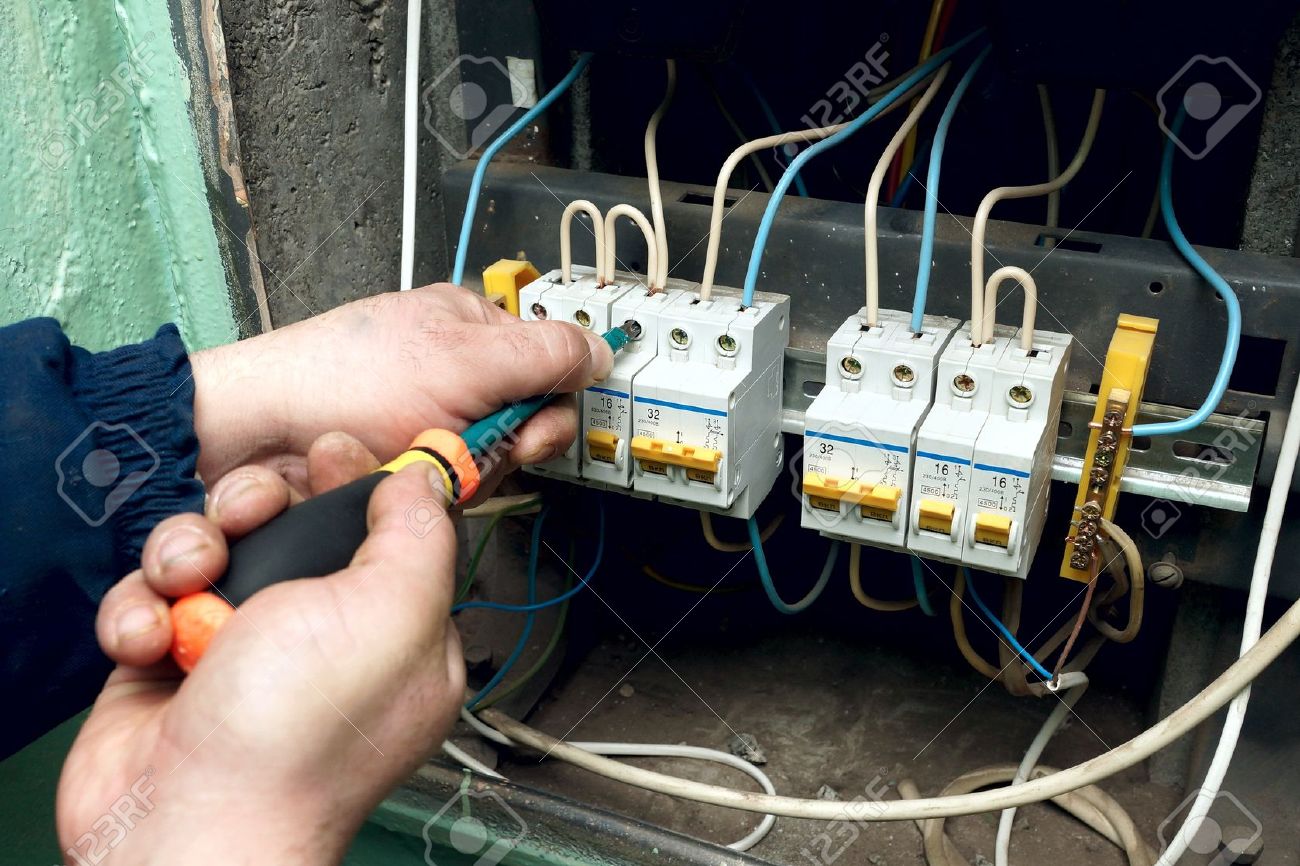If homeowners give special attention to safety and their local building codes, it is possible to wire a room with lights and outlets for electricity themselves. Taking on do-it-yourself projects like this one requires careful planning and the right tools. Working with electricity carries the inherent risk of injuries and fire, so be sure you’ve studied the process thoroughly before you tackle it.
Getting started
Check local regulations and building codes.
Before beginning, ensure you are following local building codes and using the correct materials in your work. In addition, many regions require permits or licensed electricians for major electrical work. Check to be sure you comply with local rules and regulations.
Plan the layout.
Decide in advance where you will place lighting and outlets and mark them appropriately. Consider the size and use of the room you’re wiring when determining the lighting and outlet needs. Standard heights for outlets are 12 inches, and light switches will be 48 inches, but you can select different heights according to your needs. Check out our articles Choosing the Right Lighting for Each Room of Your House and 7 Tips for Choosing the Right Place to Put Plugs When Building a New Home for tips to help you make your selections.
Gather your materials and tools.
Necessary tools will include a drill, screwdriver, wire stripper, cable running tool, and voltage tester. Materials can include electrical wire in 12- or 14-gauge (the size of the wire is determined by the number of amps flowing through the circuit), electrical boxes, outlets, light switches, wire nuts, and cable staples.
Safety first!
- Cut the electricity. Before doing any work with electricity, shut off the power to the room with the circuit breaker. Take the extra step of testing any electrical wires before you touch them with a voltage tester to ensure you don’t get an unexpected shock.
- Check the wire gauge. If the improper gauge wire is used with the wrong size circuit breaker, it could result in a malfunction in the electrical circuit or a fire. For example, if a wire with a too-small gauge is used with a high amp break, the wire could overheat and catch fire before the circuit breaker ever trips. This is no place to guess!
Getting down to work
Install electrical boxes
Once you’ve determined where the outlets and switches should go, fasten them securely to the wall studs using your drill.
Run electrical cable
Fish electrical cable through the walls from the electrical panel to each box using a cable running tool. Leave a few feet of cable at each end for connections.
Wire outlet
Connect the hot (black) wire to the brass-colored screw and the neutral (white) wire to the silver-colored screw in the outlet. Finally, the ground (bare or green) wire will be connected to the green screw. Use wire nuts to ensure the connections are secure and place the outlet into the electrical box. Screw it in.
Wire switches
Like wiring the outlets, you will connect the black wire from the power source to one terminal of the switch and the black wire leading to the light fixture to the other terminal. Secure the white wires and ground wires to each other using the appropriate wire nuts. Attach the switch to the electrical box and screw it in.
Wire lights
Again, connect the black wires from the light fixture and the electrical box using wire nuts. Connect the white wires and the ground wires similarly. Secure the light fixture to the electrical box.
Test everything out
- Test connections. Once you have completed wiring everything, turn the power back on and test each outlet, switch, and light to ensure they work. Check for live wires using the voltage tester.
- Secure wiring. If you’re working on a room that does not yet have drywall installed, after ensuring everything is working properly, use cable staples to secure the electrical cable to the studs and joists.
- Install switch and outlet covers. This finishes the room and ensures safety.
- Label circuit breakers. Label each circuit breaker in the electrical panel to accurately correspond with the rooms and outlets they control. If you have a tripped circuit in the future, proper labeling helps the homeowner locate the problem quicker.
Learn more about selecting the correct outlets for your home here: GFCI or AFCI: What Are They and Which One is Right for You?
If you aren’t comfortable tackling this project yourself, call a professional electrician!
How Can We Help?
At Shockley Electric, we address important home safety issues such as power surges, faulty electrical wiring, and potential fire hazards when we do electrical preventive maintenance in homes or commercial buildings. We are licensed, trained, and skilled in safety-proofing your home, and we are committed to the safety and well-being of our customers.
If you are experiencing electrical problems in your home or aren’t sure if your home is protected from electrical hazards, schedule an in-home estimate or appointment with us today. Fill out our form or call us now for a free estimate!

